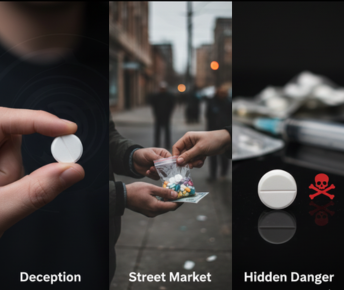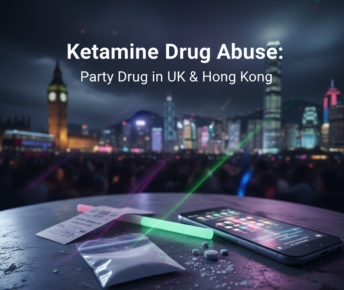Introduction
Pregabalin Addiction has emerged as a growing concern in recent years.
Originally developed to treat conditions like neuropathic pain, fibromyalgia, and epilepsy, Pregabalin, often known by its brand name Lyrica, carries a significant risk of misuse and the development of dependence and addiction.
Recognizing the signs and understanding the available Pregabalin addiction treatment options are crucial first steps for individuals and their loved ones facing this challenge.
This blog aims to provide a granular and insightful overview of Pregabalin addiction, delving into its nature, the telltale symptoms, the associated risks, and the comprehensive treatment approaches that offer hope for recovery.
Understanding the potential for Pregabalin dependence and the often difficult pregabalin withdrawal process is essential for seeking timely and effective help.
What is Pregabalin and How Can Addiction Develop?
Pregabalin is a gabapentinoid medication that works by binding to voltage-gated calcium channels in the central nervous system.
This action helps to reduce the release of certain neurotransmitters involved in pain signaling and seizure activity. While effective for its intended medical uses, Pregabalin can produce euphoric and anxiolytic effects, particularly at higher than prescribed Lyrica dosage.
This pleasurable sensation can be a primary driver for pregabalin abuse and the subsequent development of Pregabalin addiction. The causes of Pregabalin addiction are multifaceted, often involving a combination of genetic predispositions, environmental factors, and the individual's psychological makeup.
Repeated misuse can lead to the brain adapting to the presence of pregabalin, resulting in Pregabalin dependence, where the body requires the drug to function normally, and unpleasant Pregabalin withdrawal symptoms occur upon cessation.
Also Read: 4 Stages of Addiction
Symptoms of Pregabalin Addiction
Identifying Pregabalin addiction involves recognizing a pattern of compulsive drug-seeking and use despite negative consequences.
Behavioral signs of Pregabalin addiction may include taking larger doses than prescribed, using pregabalin for non-medical reasons, doctor shopping to obtain more prescriptions, spending excessive time and money on the drug, and experiencing withdrawal symptoms when attempting to reduce or stop use.
Physical signs of Pregabalin addiction can manifest as drowsiness, dizziness, blurred vision, difficulty concentrating, memory problems, and uncoordinated movements.
Emotional and psychological symptoms may include increased anxiety, depression, irritability, and a persistent craving for pregabalin.
Recognizing these signs of Pregabalin addiction is crucial for early intervention and seeking appropriate Pregabalin addiction treatment.
Risks Associated with Pregabalin Addiction
The risks of Pregabalin misuse and addiction are significant and can impact various aspects of an individual's health and well-being. Long-term Pregabalin abuse can lead to severe Pregabalin dependence, making withdrawal extremely challenging.
Lyrica side effects, such as weight gain, peripheral oedema (swelling in the extremities), and cognitive impairment, can be exacerbated with chronic misuse. Furthermore, the potential for respiratory depression increases when pregabalin is combined with other central nervous system depressants, such as opioids or benzodiazepines.
Psychological risks include the development or worsening of anxiety disorders, depression, and psychosis. Social and occupational functioning can also be severely impaired due to the compulsive nature of the addiction.
Understanding these multifaceted risks of Pregabalin underscores the urgency of seeking professional Pregabalin addiction treatment.
Pregabalin Withdrawal
Pregabalin withdrawal can be a significant barrier to stopping drug use.
The severity and duration of pregabalin withdrawal symptoms can vary depending on the level and duration of pregabalin dependence.
- Common Pregabalin withdrawal symptoms include anxiety, insomnia, nausea, vomiting, diarrhea, muscle aches, sweating, agitation, and in some cases, seizures.
The Pregabalin withdrawal timeline can range from a few days to several weeks, with the intensity of symptoms typically peaking within the first week.
Due to the potential for uncomfortable and even dangerous withdrawal symptoms, medically supervised detoxification is often recommended as the initial step in Pregabalin addiction treatment.
Effective Pregabalin Addiction Treatment Options
Effective Pregabalin addiction treatment typically involves a comprehensive and individualized approach.
Medically supervised detoxification helps to safely manage Pregabalin withdrawal symptoms.
Following detox, behavioral therapies, such as Cognitive Behavioral Therapy (CBT) and Dialectical Behavior Therapy (DBT), are crucial in addressing the underlying psychological and behavioral factors contributing to the addiction.
CBT helps individuals identify and modify maladaptive thought patterns and triggers, while DBT teaches essential coping skills for managing emotions and stress without resorting to drug use.
Individual and group therapy sessions provide a supportive environment for individuals to explore their addiction, develop coping strategies, and build a strong recovery network. For individuals seeking specialized care, addiction treatment centers like Samarpan offer structured programs tailored to address the complexities of substance use disorders.
Samarpan Recovery, with its tranquil and progressive facilities, provides comprehensive and evidence-based treatment for pregabalin addiction. Our experienced team offers medically supervised detoxification, individual and group therapy utilizing CBT and DBT, and a supportive environment to guide individuals towards lasting recovery.
Suggested Reading: Myths and Facts About Rehabilitation Centers in Mumbai
Conclusion
Overcoming Pregabalin addiction is a challenging but achievable journey. Recognizing the signs of Pregabalin addiction, understanding the associated risks of Pregabalin, and acknowledging the difficulties of Pregabalin withdrawal are crucial steps toward seeking help.
Effective Pregabalin addiction treatment involves a comprehensive approach that includes safe detoxification and evidence-based behavioral therapies.
If you or someone you know is struggling with pregabalin dependence, reaching out to an addiction treatment center in Mumbai, like Samarpan, can provide the necessary support and guidance.
Frequently Asked Questions
How to safely reduce pregabalin?
Pregabalin should be reduced gradually under the guidance of a doctor to minimize withdrawal symptoms; a typical reduction might be 75mg per week, but always follow your doctor's plan.
Is pregabalin a high-risk medication?
Pregabalin carries risks, including potential for misuse, dependence, withdrawal symptoms upon abrupt cessation, and side effects like dizziness and drowsiness.
Is pregabalin used for withdrawal?
In some cases, pregabalin has been explored for managing withdrawal symptoms from other substances, but evidence is limited and its use requires caution due to its own potential for dependence.
How long is it safe to take pregabalin?
Pregabalin can be taken for extended periods, even years for conditions like epilepsy, as long as it remains effective and side effects are manageable under medical supervision.
























 Yes, many offer serene environments and solid therapeutic frameworks. However, quality varies, so it’s essential to research accreditation, staff credentials, and therapeutic depth.
Yes, many offer serene environments and solid therapeutic frameworks. However, quality varies, so it’s essential to research accreditation, staff credentials, and therapeutic depth.




